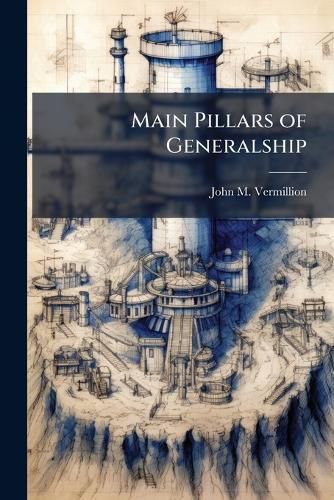Readings Newsletter
Become a Readings Member to make your shopping experience even easier.
Sign in or sign up for free!
You’re not far away from qualifying for FREE standard shipping within Australia
You’ve qualified for FREE standard shipping within Australia
The cart is loading…






This essay is about the art and requirements of generalship, or command at the operational level of war. The need for such a study exists in that current leadership doctrine looks almost wholly at the personal attributes desirable in the commander. The paper comprises two main parts. The first explores the nature of the relationship between leader and follower, and concludes that it is in the best interest of the U.S. Army to permit operational commanders to select their own chief subordinates. The second part of the paper examines the fundamental issues with which the senior commander ought to be concerned and knowledgeable. In the author's judgment, the general should pay special attention to carving out of his schedule time to think, to issuing simple, unambiguous orders, to decentralizing command at low levels, and to developing a tolerance for the unexpected and uncertain. Other major judgments pertain to delivery of force on the battlefield. The commander first must decide, and impart to others, how the campaign should end. Second, he must sequence actions to bring about the desired conclusion. Finally, he must be able to discern with certitude the fine distinctions between tenacity and obstinacy.
This work has been selected by scholars as being culturally important, and is part of the knowledge base of civilization as we know it. This work was reproduced from the original artifact, and remains as true to the original work as possible. Therefore, you will see the original copyright references, library stamps (as most of these works have been housed in our most important libraries around the world), and other notations in the work.
This work is in the public domain in the United States of America, and possibly other nations. Within the United States, you may freely copy and distribute this work, as no entity (individual or corporate) has a copyright on the body of the work.
As a reproduction of a historical artifact, this work may contain missing or blurred pages, poor pictures, errant marks, etc. Scholars believe, and we concur, that this work is important enough to be preserved, reproduced, and made generally available to the public. We appreciate your support of the preservation process, and thank you for being an important part of keeping this knowledge alive and relevant.
$9.00 standard shipping within Australia
FREE standard shipping within Australia for orders over $100.00
Express & International shipping calculated at checkout
This essay is about the art and requirements of generalship, or command at the operational level of war. The need for such a study exists in that current leadership doctrine looks almost wholly at the personal attributes desirable in the commander. The paper comprises two main parts. The first explores the nature of the relationship between leader and follower, and concludes that it is in the best interest of the U.S. Army to permit operational commanders to select their own chief subordinates. The second part of the paper examines the fundamental issues with which the senior commander ought to be concerned and knowledgeable. In the author's judgment, the general should pay special attention to carving out of his schedule time to think, to issuing simple, unambiguous orders, to decentralizing command at low levels, and to developing a tolerance for the unexpected and uncertain. Other major judgments pertain to delivery of force on the battlefield. The commander first must decide, and impart to others, how the campaign should end. Second, he must sequence actions to bring about the desired conclusion. Finally, he must be able to discern with certitude the fine distinctions between tenacity and obstinacy.
This work has been selected by scholars as being culturally important, and is part of the knowledge base of civilization as we know it. This work was reproduced from the original artifact, and remains as true to the original work as possible. Therefore, you will see the original copyright references, library stamps (as most of these works have been housed in our most important libraries around the world), and other notations in the work.
This work is in the public domain in the United States of America, and possibly other nations. Within the United States, you may freely copy and distribute this work, as no entity (individual or corporate) has a copyright on the body of the work.
As a reproduction of a historical artifact, this work may contain missing or blurred pages, poor pictures, errant marks, etc. Scholars believe, and we concur, that this work is important enough to be preserved, reproduced, and made generally available to the public. We appreciate your support of the preservation process, and thank you for being an important part of keeping this knowledge alive and relevant.